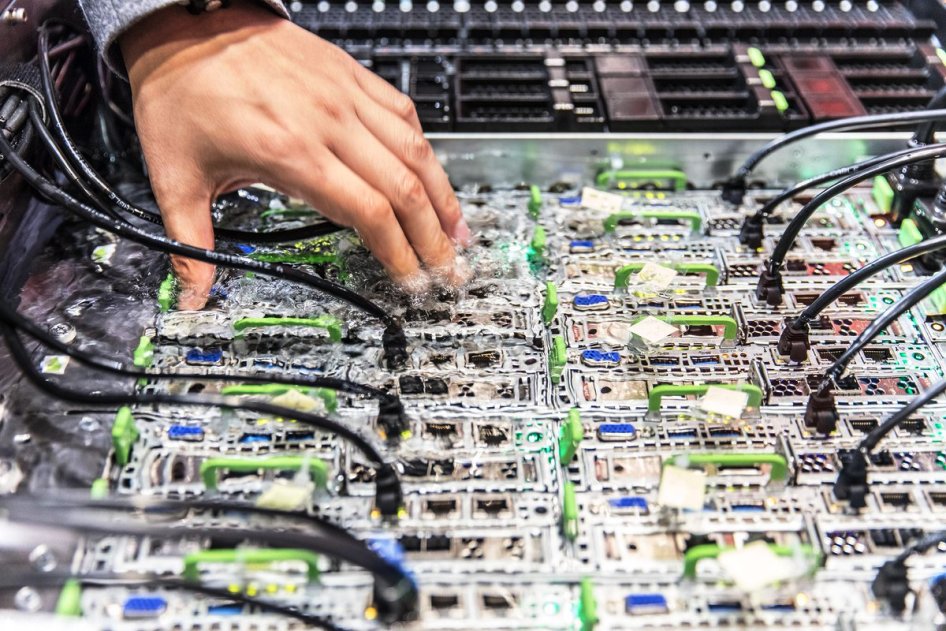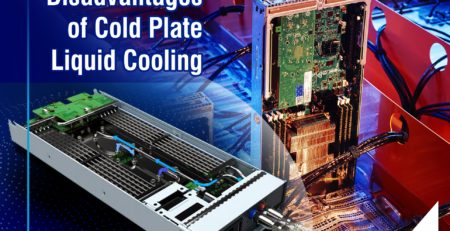The Wave of Future in Data Center Cooling – Liquid Cooling

Modern data centers are continuously faced with a challenge to balance the need for reliable cooling without having to reduce the rack density, as demanding workloads drive up the power densities in the data centers. This has paved the way for liquid cooling, which was traditionally reserved for mainframes and academic supercomputers, into the enterprise data center.
Liquid cooling has proved itself to be much more efficient than air cooling. Although its adoption in the data centers has been slow, it has been steady. Liquid cooling is seeing a spike in demand, because data centers today aim to pack their rack to capacities, calling for a more efficient and targeted approach to cooling.
Liquid cooling technology earlier were mostly limited to using water as the coolant liquid, but the more modern techniques like Immersion and Direct-to-chip liquid cooling systems do not use water, but a non-conductive (dielectric) and non-flammable fluid for the device, with chilled water only at the heat exchanger, for removing heat from the immersion fluid. This eliminates water from the exact vicinity of the IT devices, securing your expensive devices in case of any mishap.
So, how exactly will liquid cooling change the day-to-day working of your data center?
The everyday maintenance of your data center will change with the adoption of liquid cooling technology, and it largely depends on which type of cooling technology you choose. For example, in the case of Rear-door heat exchangers little or no changes may be required. These have plumbing connections on the rear door, which are flexible, so you can open and close it, in pretty much the same way. Your door just gets thicker and heavier, but servicing remains more or less the same.
On the other hand, a different model of liquid cooling like Immersion, which involves placing the devices in a bath of dielectric fluid, will change your maintenance processes a little more. Liquid Immersion Cooling has proved itself to be one of the most innovative and progressive technologies, which equips the data center to cope with all the new-age digital disruptions like 5G, AI, AR, and VR.
The technology is reliable, efficient, evolving, and advantageous once you understand how to adjust your data center infrastructure and maintenance process to suit it. With Immersion cooling, when you want to replace a component dipped in a tub of coolant, you will have to let it drip first because the coolant is expensive so you do not want to waste it, also it is messy and you don’t want to spill it. You will get a hang of it after you have done it for a few times.
Liquid cooling could mean slightly more work for maintenance, but it also means a better working environment, by making the data center quieter and pleasant in terms of temperatures, which is currently divided into two extremes of the hot and the cold aisle. Most importantly it will reduce the power consumption and power bills significantly, saving you huge amounts in power bills.
The currently popular method of air cooling is also no longer feasible as racks are becoming denser and equipment is becoming smaller with faster processors and accelerators, requiring much more targeted cooling. With air cooling that will mean more handlers and hence more power consumption, a big power bill, and a bigger carbon footprint. Simply put, air cooling no longer makes the cut to fit the changing demand of the data centers.
Liquid immersion cooling solutions are not only viable for energy saving, but they are also revolutionizing the modern data center by increasing equipment efficiency. They can handle the growing density of data centers effectively, and they have shown significant benefits for its users. Immersion cooling units are being used in multiple data center situations bringing down PUE of the facility significantly and increasing the efficiency of the data center as is.
Liquid immersion cooling, on one hand, allows capacity planning for the data center and environmental resilience to data center equipment. On the other hand, it removes the limitations of rack density, power availability, and location issues. Thus, it is safe to say that with its tried and tested methods liquid cooling has arrived as the future of data center cooling, and it is here to stay.
To further Prasa’s commitment to energy efficiency and its confidence in liquid immersion cooling; with immense pleasure, I announce Prasa’s partnership with Green Revolution Cooling. The partnership covers a wide range of high-quality products for single-phase liquid immersion cooling, like- ICEraQ™, ICEtank™, HashRaQ™, HashTank™. Prasa is the first and only partner of GRC for the provision of Liquid Immersion Cooling solutions in India.
You can read the complete details here.









Leave a Reply